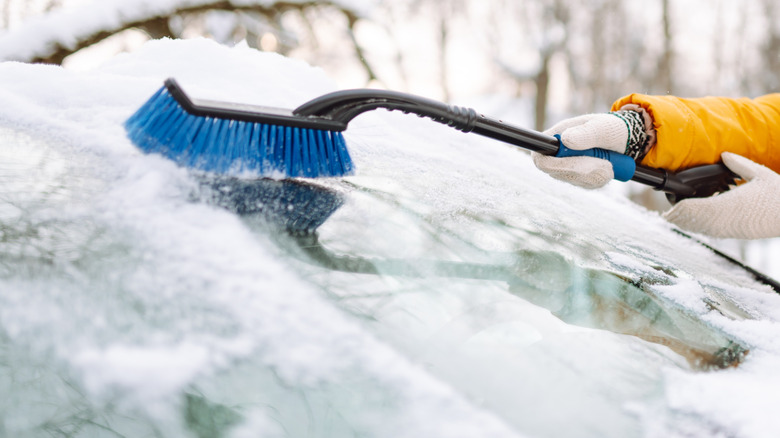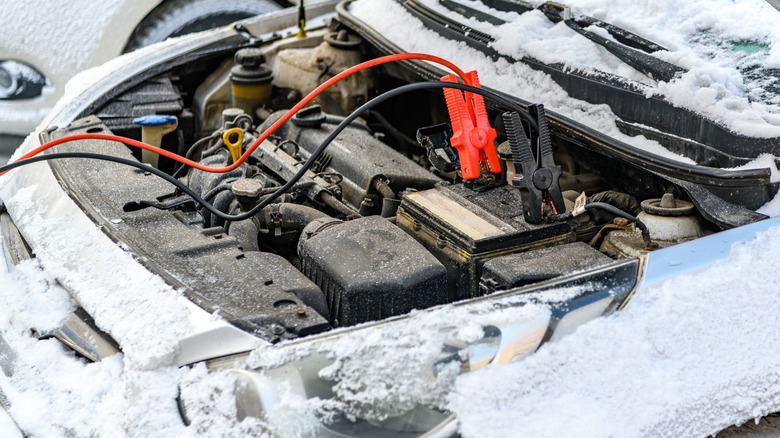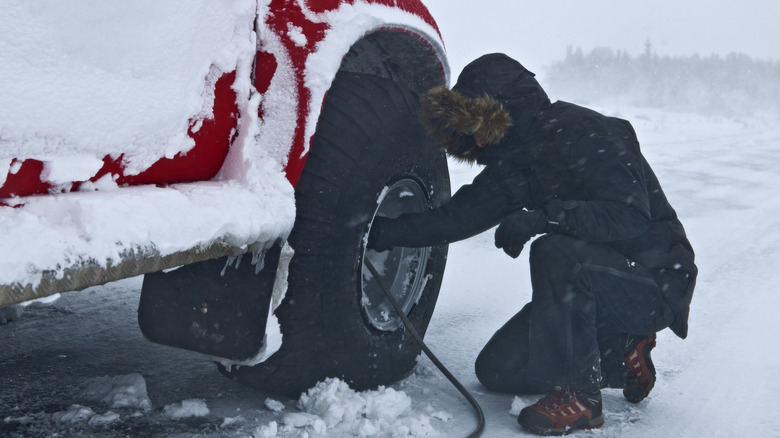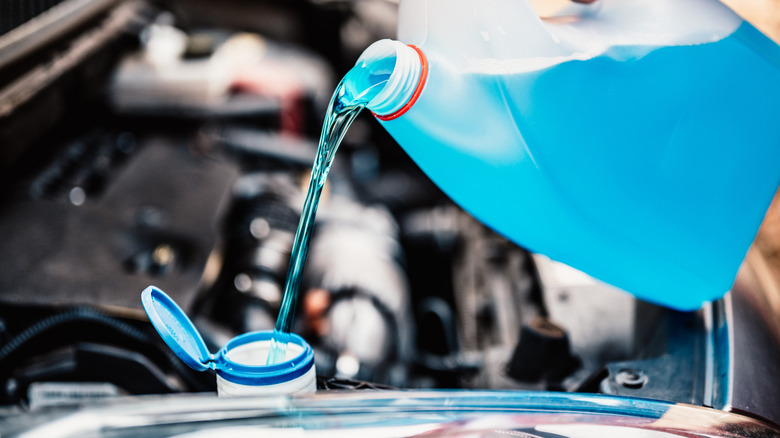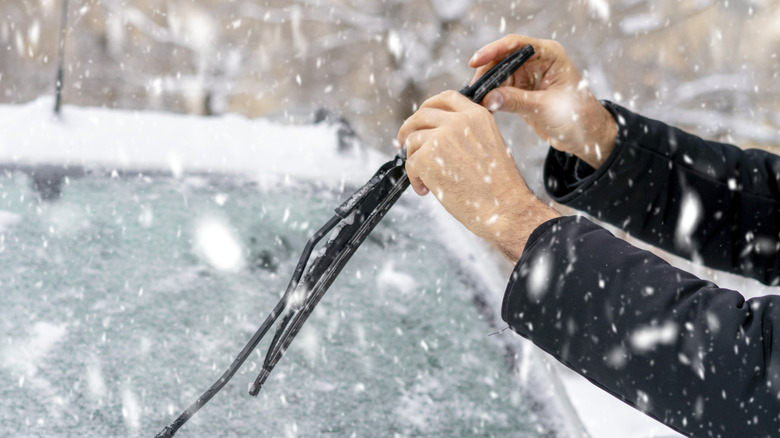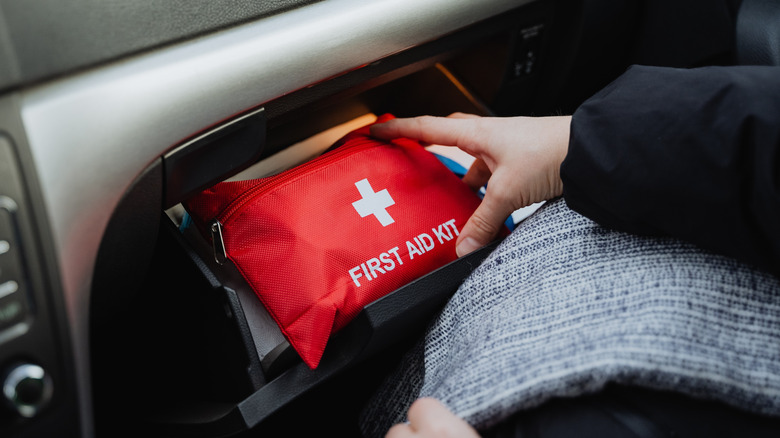5 Ways To Avoid Winter Car Troubles
If you live in a colder part of the country, you know firsthand how tough the cold can be on your car. From snow to freezing rain, when the temperature drops, you have to contend with all sorts of challenges — including slippery roads, reduced visibility, and freezing temperatures. It can feel like a daily battle: Every morning you have to get up to scrape ice off your windshield, warm up your car, and when the weather is at its worst, face hazardous road conditions. It's enough to make even the most seasoned driver frustrated.
There are things you can do to make the coldest months of the year more tolerable for you and your vehicle. Early preparation is your first line of defense against harsh weather conditions, and you'll want to make sure your car's ready well in advance of the first winter storm. Doing things like checking your battery and making sure your tires are properly inflated can go a long way toward keeping you safe and your car in good working order this winter.
Battery maintenance
A dead or weak battery is one of the most common issues drivers face during the colder months of the year. By the time the outdoor temperature hits 0°F, your 12-volt battery will have lost half of the cranking power it had at 80°F, which can make it much harder for you to start your engine. Your car's battery must be charged to at least 70% to work properly. Once temperatures drop below freezing, a weak battery may struggle to hold a charge and start your engine. For all of these reasons, battery maintenance should be at the top of your list before winter weather takes hold.
To make sure your battery is in good working order, take it to an auto parts store or repair shop for testing. You can have the mechanic inspect the battery for any signs of corrosion, moisture, or bulges in the casing. You should be on the lookout for signs that it's time to replace your car battery, and if it's more than three years old, consider replacing it. Otherwise, you may need to charge it to make sure it's ready to handle the cold.
Tire care
Your car's tire pressure changes in the cold, and that's why it's so important to stay on top of checking it regularly when the temperature drops. Tires lose between one and two pounds of pressure for every 10-degree decrease in temperature. You can find your car manufacturer's recommended tire pressure on the door placard. Before getting on the road in the winter, you want to be sure your tires are inflated to the recommended PSI or pounds per square inch. Keeping your tires within the recommended PSI will allow your car's tires to maintain traction and handling.
If you live in an area that gets a lot of snow or ice, you may want to consider investing in snow tires for better traction when driving on snowy and icy roads. If you live in a part of the country that only occasionally sees snow, a set of all-season tires should be enough to keep you safe on the road. When you buy new tires, you should be prepared to replace them all at the same time to avoid mismatched tread patterns and wear on other components like the suspension and alignment.
Fluid checks
When it gets cold outside, the engine oil in your car can thicken, making it harder for your car to start. If you've ever wondered if engine oil can freeze, the short answer is no. However, it can turn into a sludge-like substance, reducing lubrication and making it harder for your engine to run smoothly. That's because engine oil plays an important role in keeping your engine's moving parts lubricated while protecting against wear and tear. Using a winter-grade oil with a lower viscosity can help it flow more easily in cold temperatures.
You may have seen a "W" on an engine oil label — this stands for "winter" and lets you know how well the oil performs in cold temperatures. This is the type of oil you need to buy if you live in a place that experiences freezing or harsh winter conditions. Besides engine oil, you should check the coolant levels in your radiator and top it off with a 50/50 mix of antifreeze and water, if needed. Doing so will ensure your coolant doesn't freeze when temperatures drop a few degrees below zero. Keep in mind, you may need a 60/40 or 70/30 ratio in areas that experience extreme cold.
Investing in a winter-grade windshield washer fluid is also something you should do. The washer fluid you use in the summer months can freeze in subzero temperatures, which could damage your wiper blades. Winter-grade washer fluid is formulated to withstand the coldest temperatures, so you can clean your windows of the salt and road grime that's so common in the winter months.
Wiper blades and visibility
It's a good idea to replace old wiper blades in the weeks leading up to winter to ensure you have good visibility in the ice and snow. On average, windshield wipers last between six and 12 months, so chances are by the time winter rolls around, it'll be time to replace them. A good check of whether it's time to replace your blades is if they leave behind streaks or residue when you use them.
If you live in a place that gets a lot of snow or ice, consider switching to winter windshield wipers before the first snow or ice storm hits your area. You can choose from several blades designed for snow and ice. Beam blades apply pressure evenly across the windshield to keep snow and ice from building up. Winter wiper blades are similar to standard framed wipers, but have an added cover over the hinges to prevent snow and ice buildup. If you live in an area with extreme weather, heated wiper blades melt snow and ice as soon as it hits your windshield, keeping your view clear.
Keep an emergency kit in your car
Even if you do everything right and prepare your car for winter well before the temperatures drop, something can still go wrong. That's why it's so important to travel with an emergency kit in your car, just in case you're faced with an unexpected situation. While there are a few emergency tools you should keep in your car all year long, your emergency kit will be winter-specific.
Before you go out on wintry roads, be sure to pack gloves, a shovel, hats, a reflector vest, a basic first aid kit, an ice scraper or snow brush, a flashlight, a blanket, a safety triangle, and a cellphone charger in your emergency kit. In addition to these things, you should have some non-perishable snacks and water along with extra layers of clothing in your car in case you get stuck somewhere and have to wait for help. Another thing you can do is keep a bag of sand or non-clumping kitty litter in your car to use as traction if you find yourself stuck in the snow.
